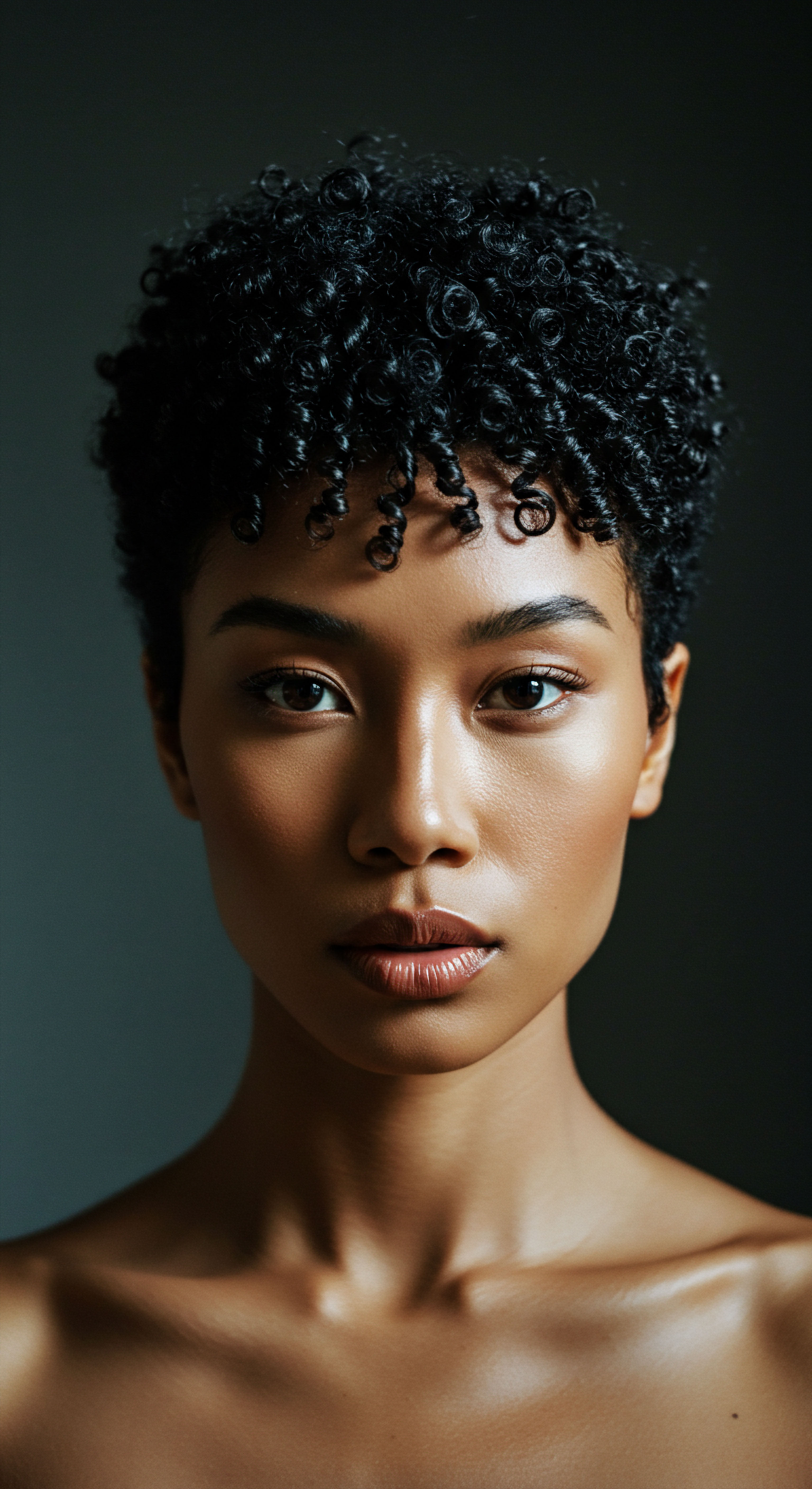
Roots
The whisper of the wind through textured strands, the resilience held within each curl, each coil—these are not mere observations but echoes of stories untold, of identities often misunderstood. When we consider the CROWN Act, our thoughts may first turn to legal definitions and workplace policies. Yet, to truly grasp its essence, we must first look deeper, into the very fibers of being, into the history and spirit that hair carries.
This is not a distant legal concept; it touches the core of how individuals present themselves, how they are perceived, and how they navigate the professional world. The journey of understanding begins with acknowledging the profound connection between hair, heritage, and the subtle currents of bias that have long flowed through our societal spaces.

What Defines Hair Discrimination in the Workplace?
Hair discrimination, at its heart, is a refusal to accept natural hair textures and protective styles, often deeming them “unprofessional” within a framework of Eurocentric beauty standards. This bias has historical roots, tracing back to periods when the non-European texture of Black hair was referred to as “wool,” with smoother textures being favored. Such racialized notions have permeated societal structures, including the workplace, for centuries. Employers, through formal grooming policies or unspoken expectations, have frequently sought to control how individuals, particularly Black and brown people, wear their hair.
The consequences of failing to adhere to these often unstated standards can be severe, ranging from rescinded job offers and denied promotions to disciplinary actions or even termination. Beyond these overt acts, individuals also experience subtle yet pervasive forms of hair-based bias, known as microaggressions. These might include unwelcome comments, questions about the authenticity of one’s hair, or unsolicited touching. Such experiences, though seemingly minor, erode self-worth and create a sense of otherness.
Hair discrimination stems from deeply ingrained societal norms that have historically favored Eurocentric beauty standards, affecting professional perceptions and opportunities.

The Historical Context of Hair Bias
The story of hair bias is deeply intertwined with American history. From the era of slavery, where the texture of enslaved people’s hair could determine their value and working conditions, to the late 19th century’s popularization of hair-straightening combs by figures like Madam C.J. Walker, the pressure to conform to straight hair ideals has been persistent. The concept of “good hair” became ingrained in the lexicon, equating straighter, more European hair with respectability and social advancement.
The mid-22nd century saw a counter-movement with the rise of the “Black Is Beautiful” movement, which championed natural afros as symbols of Black power and rebellion against prevailing beauty standards. Yet, even as afros gained some legal protection under Title VII of the Civil Rights Act of 1964 in cases like Jenkins v. Blue Cross Mutual Hospital Insurance (1976), the social pressure to conform persisted. Later decades saw the popularization of protective styles like braids and cornrows, which, despite their cultural significance, also led to new forms of discrimination and legal challenges.
- Cultural Significance ❉ Hair often serves as a declaration of personal identity and a symbol of heritage, ancestry, and cultural practices for many Black and brown people.
- Eurocentric Standards ❉ Historically, societal norms have favored straight or loosely curled hair, labeling textured or culturally significant styles as “unprofessional” or “untidy”.
- Systemic Racism ❉ Hair discrimination is a manifestation of systemic racism, designed to preserve white spaces and control how Black and brown people present themselves in professional and educational environments.

Ritual
Stepping from the foundational understanding of hair bias, we arrive at the practical realm of the CROWN Act. This legislation offers a guiding hand, a set of principles designed to reshape the daily practices and unspoken rituals within workplaces. It speaks to the aspiration of a world where one’s authentic self, hair and all, can move freely without the burden of judgment.
The intent is to dismantle the insidious norms that have long dictated appearance, offering a path toward environments where belonging is not contingent upon altering one’s natural presentation. This section explores the mechanics of this shift, the tangible ways the CROWN Act seeks to recalibrate workplace expectations.
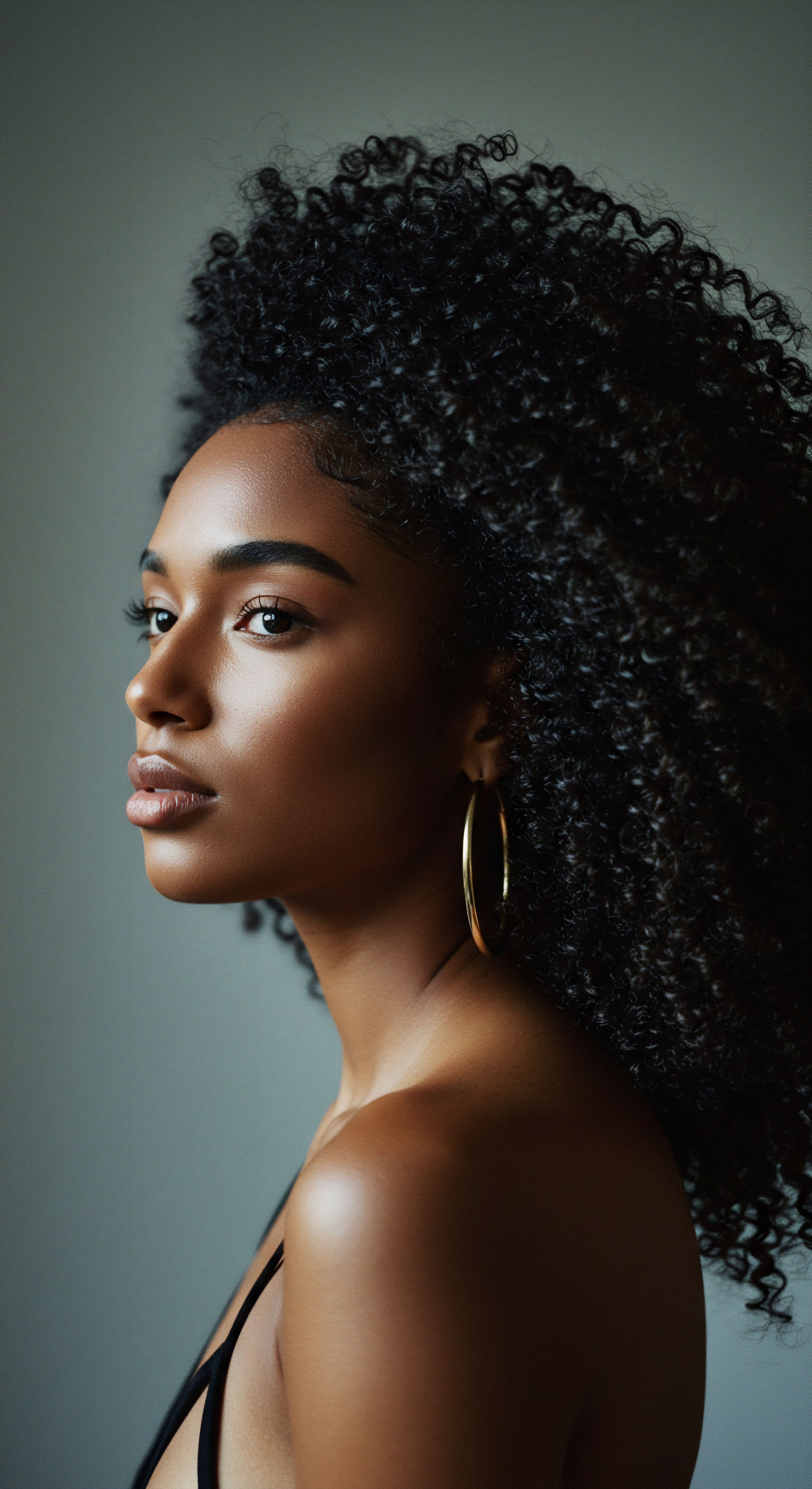
How Does the CROWN Act Redefine Professional Appearance?
The CROWN Act, which stands for “Creating a Respectful and Open World for Natural Hair,” directly confronts the historical exclusion of natural hair textures and protective styles from definitions of professional appearance. By amending anti-discrimination laws, it clarifies that traits historically associated with race, including hair texture and specific protective hairstyles, are protected characteristics. This means that policies prohibiting styles such as afros, braids, locs, twists, and Bantu knots are deemed discriminatory.
Prior to the CROWN Act, Title VII of the Civil Rights Act of 1964 prohibited race-based discrimination, but it did not explicitly cover discrimination based on phenotypical markers like hair texture. This ambiguity created a loophole, allowing employers to enforce grooming policies that, while seemingly neutral, disproportionately affected Black individuals. The CROWN Act directly addresses this, ensuring that employment opportunities are not denied because of natural hair texture or culturally significant hairstyles.
The CROWN Act directly expands anti-discrimination laws to include hair texture and protective styles, challenging historical Eurocentric beauty standards in professional settings.

Workplace Policy Revisions and Compliance
For employers, the passage of the CROWN Act in various states signals a clear call to action regarding their grooming policies and workplace culture. Policies that previously contained vague requirements about “professional” hairstyles must be updated to explicitly accommodate and protect natural hair and protective styles. This requires a careful review to ensure that no policies, even those appearing neutral, have a disparate impact on individuals based on their racial or cultural background.
Compliance involves more than simply removing discriminatory language. It necessitates a shift in organizational mindset. Employers must understand that personal preferences of leadership or customer preferences are not valid justifications for prohibiting Black hair.
Instead, the focus should be on whether a hairstyle genuinely prevents an employee from performing their job duties safely and effectively. Many states that have adopted the CROWN Act outline specific penalties for violations, which can include compensatory and punitive damages, equitable relief, and recovery from economic losses.
| State California |
| Year Enacted 2019 |
| Key Provisions First state; amends definition of race to include hair texture and protective styles like braids, locs, twists. |
| State New York |
| Year Enacted 2019 |
| Key Provisions Adopted similar language to California, protecting against hair-based discrimination. |
| State New Jersey |
| Year Enacted 2019 |
| Key Provisions Prohibits discrimination based on natural hair and protective styles. |
| State Louisiana |
| Year Enacted 2022 |
| Key Provisions Expands intentional discrimination definition to include natural, protective, or cultural hairstyles. |
| State This table illustrates the ongoing legislative progress of the CROWN Act across the United States. |

Training and Cultural Competence
Beyond policy adjustments, the spirit of the CROWN Act calls for a deeper engagement with cultural competence within organizations. This means educating hiring managers, recruiters, and employees about hair bias and its manifestations, including microaggressions. Workshops addressing hair-related microaggressions can be instrumental in raising awareness and fostering a more inclusive environment.
When individuals are asked if their hair is “real” or if it can be touched without consent, these seemingly innocent questions contribute to a sense of objectification and marginalization. Training can equip staff to recognize and address such instances, creating a space where individuals feel seen and respected for their whole selves.
Ultimately, the CROWN Act does not merely legislate against discrimination; it encourages a cultural shift towards celebrating diversity and authenticity in the workplace. It invites organizations to consider how their environments might unintentionally pressure individuals to conform to narrow beauty standards, often at the expense of their identity and well-being.
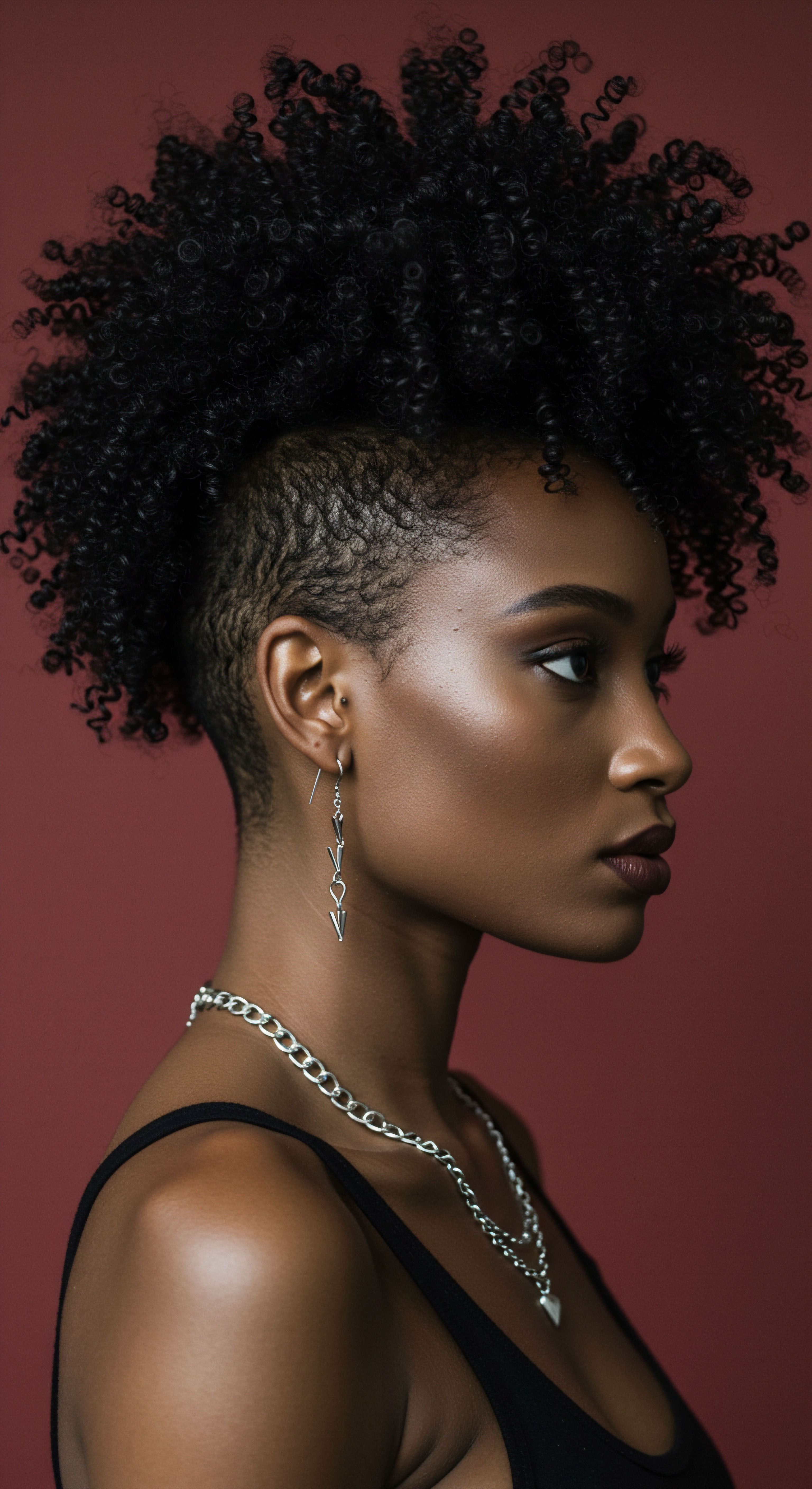
Relay
The journey of the CROWN Act extends beyond policy pages, reaching into the intricate pathways of human perception, societal structures, and the quiet, often unacknowledged burdens carried by those whose hair has long been policed. Here, we step into a more sophisticated exploration, where the threads of history, psychology, and lived experience intertwine to illuminate the profound impact of hair bias and the transformative potential of legislative action. This section seeks to unravel the deeper layers of this issue, moving beyond surface-level observations to consider the complex interplay of factors that shape workplace realities for individuals with textured hair.
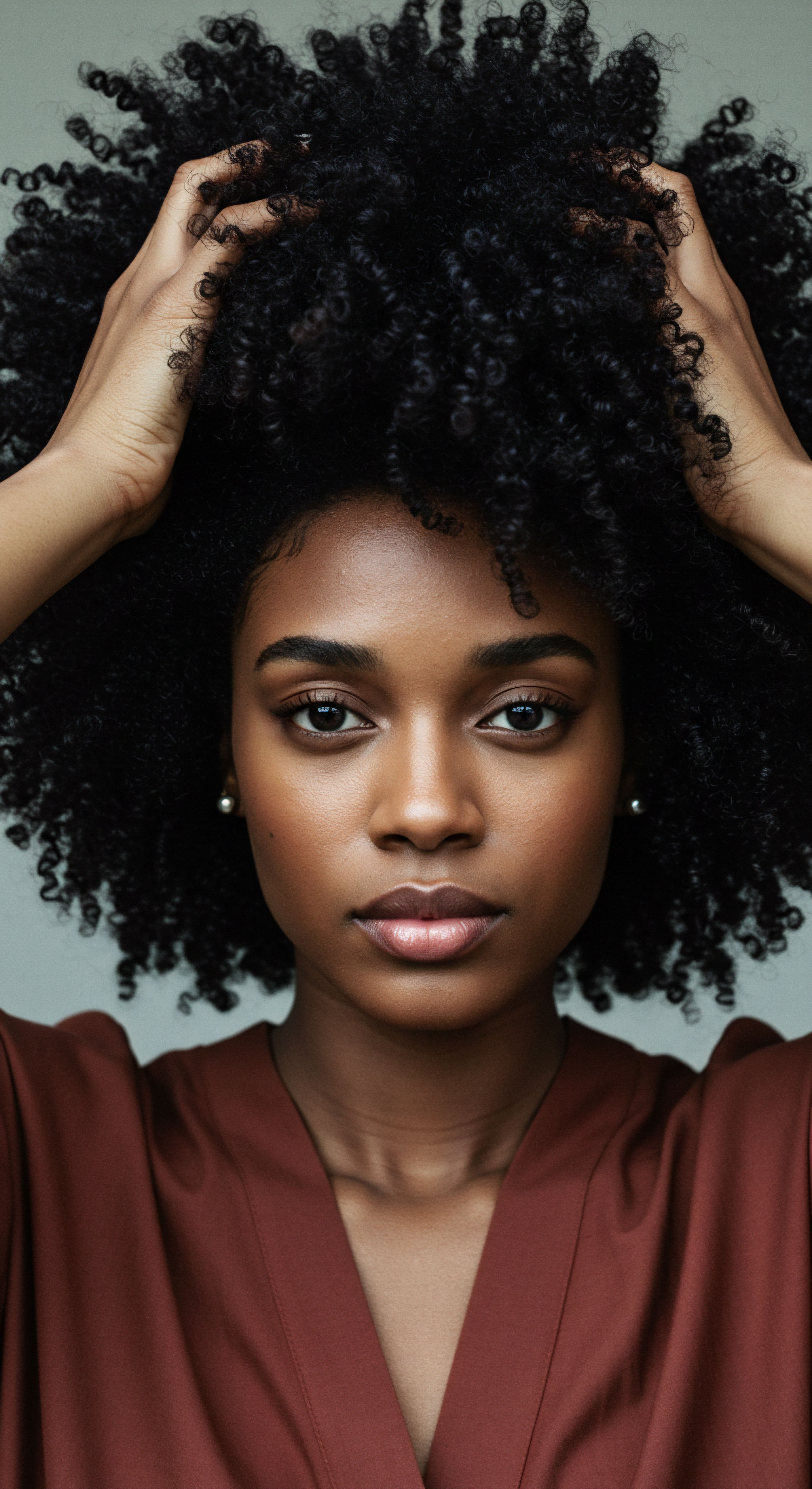
The Psychological Weight of Hair Bias
The psychological toll of hair discrimination is substantial, leaving lasting imprints on self-perception and mental well-being. Constant criticism, subtle microaggressions, or even the underlying fear of judgment regarding one’s natural hair can erode self-worth and create heightened anxiety in professional settings. Individuals may feel compelled to conform to beauty standards that do not reflect their authentic identity, leading to internal conflict and a sense of detachment from their true selves. This pressure is not merely cosmetic; it touches upon fundamental aspects of identity and belonging.
Research highlights the pervasive nature of this psychological burden. A 2020 study by Michigan State University and Duke University, titled “The Natural Hair Bias in Job Recruitment,” found that Black women with natural hairstyles were perceived as less professional, less competent, and less likely to be recommended for a job interview than Black women with straightened hair or White women with either curly or straight hairstyles. This finding, replicated across multiple controlled experiments, indicates a clear bias in hiring processes, particularly in industries with strong dress norms like financial services and management consulting.
The same Black applicant, when shown with natural hair versus straight hair, received significantly lower ratings for professionalism and interview recommendations. This subtle yet powerful bias can lead to missed promotions, limited networking opportunities, and a chilling effect where employees alter their appearance to retain their positions, all contributing to significant psychological distress.
Hair discrimination imposes a heavy psychological burden, manifesting as anxiety and identity conflict for those pressured to alter their natural appearance for professional acceptance.
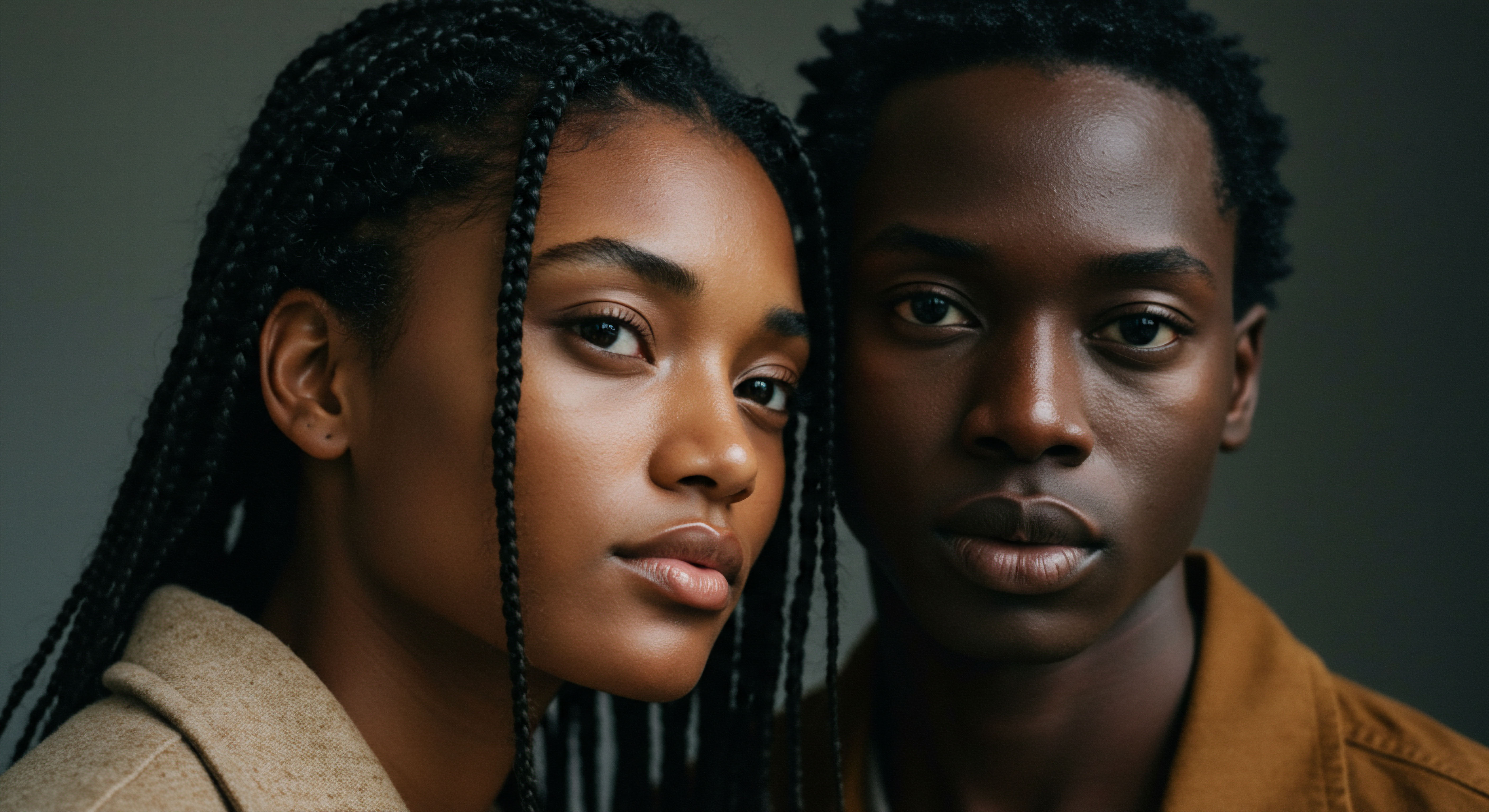
Economic Disparities and Health Implications
Beyond the psychological impact, hair discrimination contributes to tangible economic disparities and, in some cases, poses health risks. The pressure to conform to Eurocentric hair standards often means investing considerable time and money in chemical relaxers, pressing combs, and other styling methods. A 2020 Harvard University study concluded that some hair products commonly used to straighten hair contain parabens, phthalates, and other chemicals known as endocrine disruptors, which interfere with hormones.
This disruption is linked to serious health issues, including diabetes, metabolic syndrome, cardiovascular disease, and pregnancy-related complications. A 2022 National Institutes of Health study further reported a higher risk of uterine cancer with women who reported using chemical hair straightening products.
This creates a profound dilemma ❉ choose between potential health risks and financial burden, or risk career stagnation and job loss. The CROWN Act aims to alleviate this burden, allowing individuals to maintain their natural hair without fear of professional retribution. By validating diverse hair textures and styles, it reduces the pressure to spend money and time on harmful straightening processes, thereby promoting both economic equity and physical well-being.

How Does the CROWN Act Influence Broader DEI Initiatives?
The CROWN Act serves as a potent catalyst for broader Diversity, Equity, and Inclusion (DEI) initiatives within workplaces. By explicitly protecting natural hair, it forces organizations to confront implicit biases that may have long gone unexamined. This legislative push encourages a more holistic approach to anti-discrimination efforts, prompting companies to look beyond overt acts of racism to address more subtle, systemic issues.
The legislation’s impact extends to recruitment and talent retention. When individuals with textured hair feel safe and respected in their authentic presentation, it broadens the talent pool and fosters a more inclusive work environment. Organizations that proactively update their policies and educate their staff are better positioned to attract and retain diverse talent, which in turn can lead to increased innovation and productivity. A workplace where employees feel genuinely valued for their unique contributions, including their cultural expression through hair, is a more engaged and productive one.
| Area of Impact Hiring & Recruitment |
| Pre-CROWN Act Reality Bias against natural hair often led to fewer interviews or rescinded offers for Black women. |
| Post-CROWN Act Aspiration Fairer evaluation of candidates based on qualifications, irrespective of hair texture or style. |
| Area of Impact Workplace Culture |
| Pre-CROWN Act Reality Microaggressions and pressure to conform to Eurocentric grooming standards were common. |
| Post-CROWN Act Aspiration An environment where natural hair is accepted, celebrated, and free from judgment. |
| Area of Impact Employee Well-being |
| Pre-CROWN Act Reality Psychological stress, anxiety, and self-esteem issues due to hair policing. |
| Post-CROWN Act Aspiration Reduced mental burden, enhanced self-confidence, and a stronger sense of belonging. |
| Area of Impact DEI Strategy |
| Pre-CROWN Act Reality Hair discrimination often overlooked or dismissed as a "personal choice". |
| Post-CROWN Act Aspiration Integration of hair protection into comprehensive anti-racism and inclusion frameworks. |
| Area of Impact The CROWN Act seeks to transform workplaces from spaces of conformity to arenas of genuine acceptance and equity. |
The legislation also encourages a re-evaluation of the very concept of “professionalism.” For too long, this term has been implicitly tied to Eurocentric aesthetics, creating an exclusionary standard. The CROWN Act challenges this narrow definition, asserting that professionalism is determined by an individual’s skills, dedication, and conduct, not by the texture or style of their hair. This shift invites a more expansive and equitable understanding of what it means to be professional in a diverse workforce.
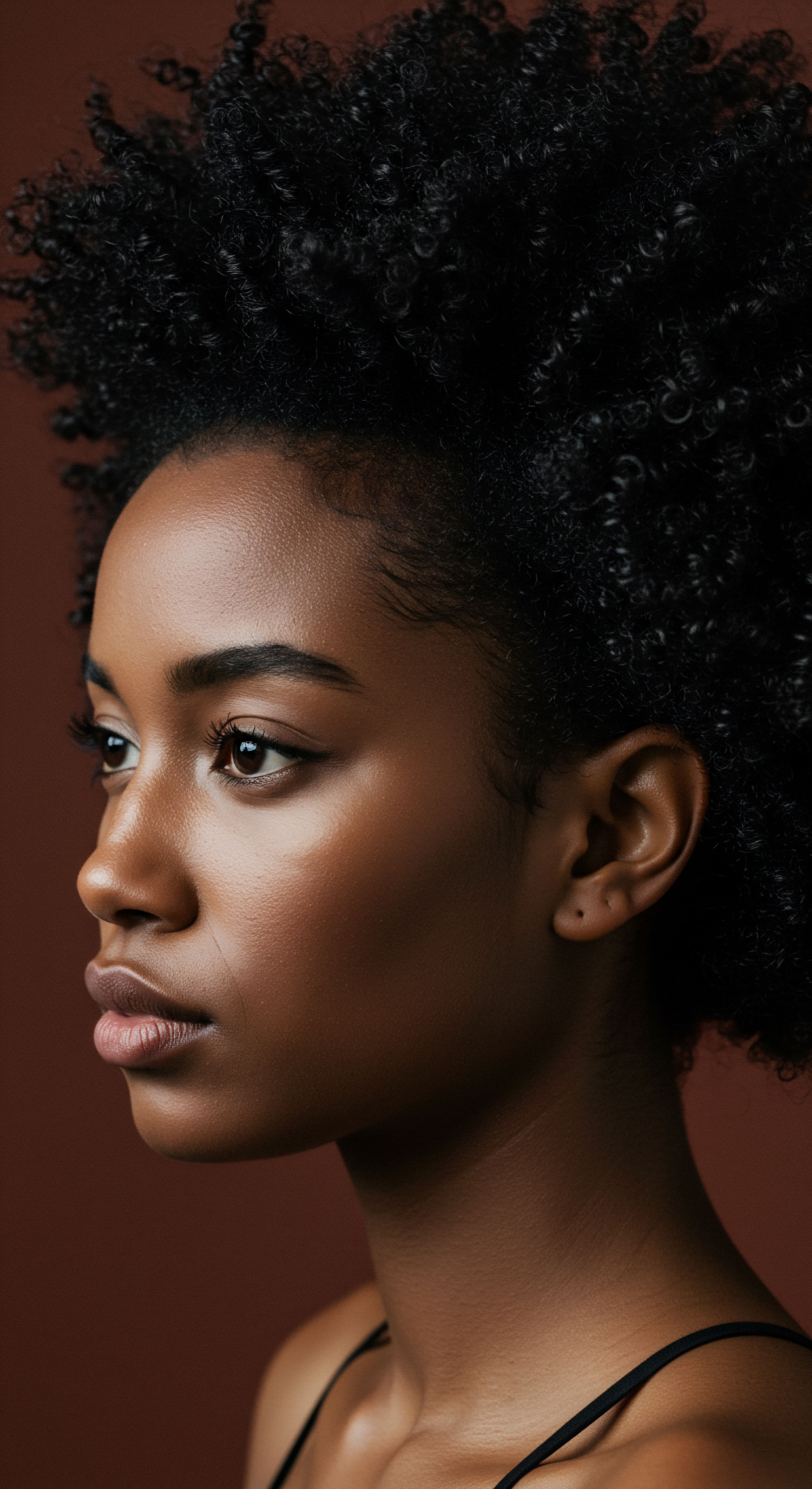
Reflection
The journey through the CROWN Act’s influence on workplaces reveals a profound truth ❉ the seemingly simple act of wearing one’s hair naturally is, for many, a deeply personal and cultural declaration. This legislation is not merely a legal mandate; it is a gentle but firm assertion of dignity, a recognition of heritage, and an invitation for workplaces to truly mirror the rich tapestry of humanity. As we move forward, the hope remains that these protections will continue to spread, fostering environments where authenticity is not just tolerated but celebrated, allowing every individual to shine in their truest form.
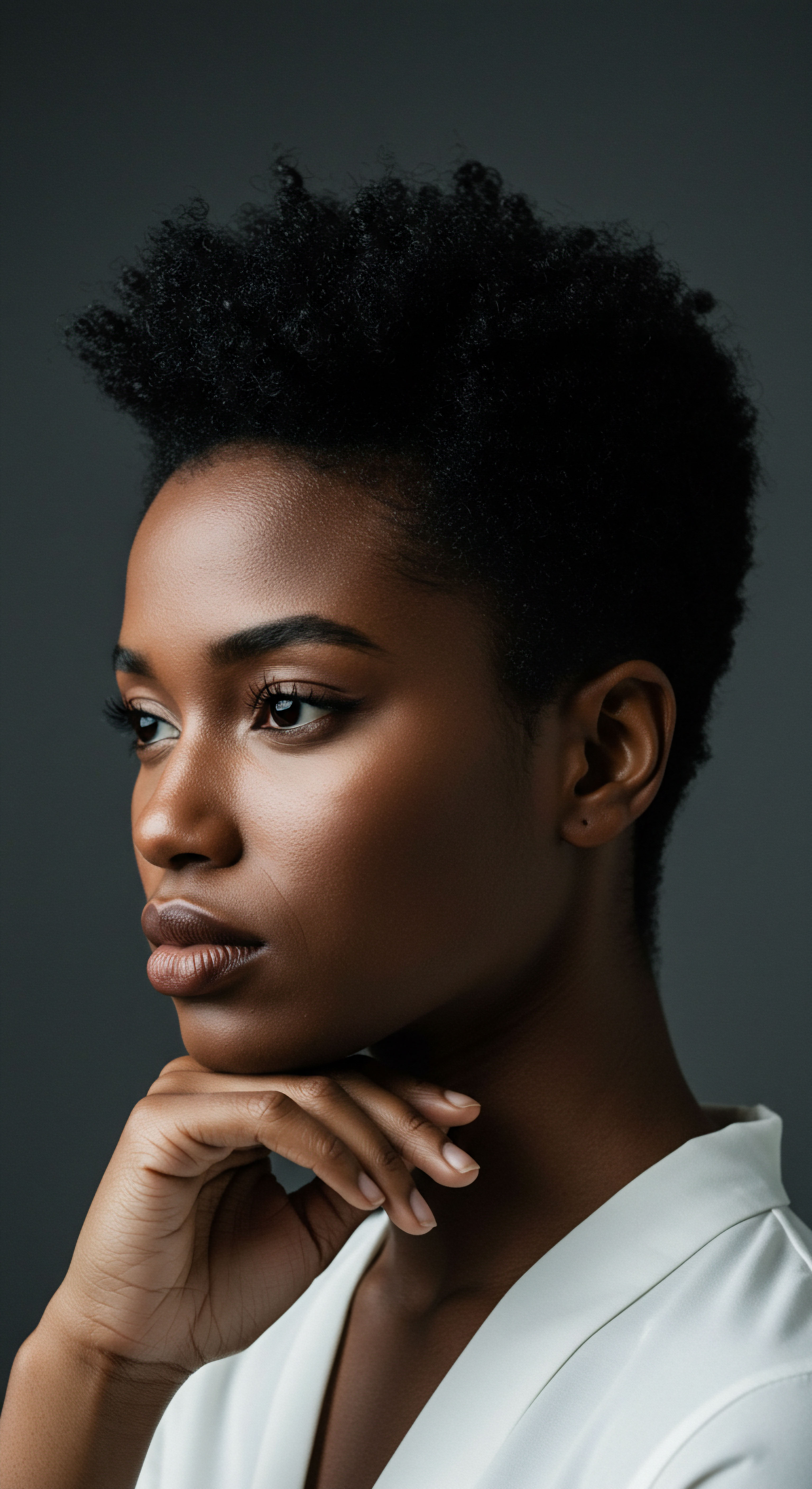
References
- Byrd, Ayana, and Lori L. Tharps. Hair Story ❉ Untangling the Roots of Black Hair in America. St. Martin’s Griffin, 2001.
- Dawson, J. M. Karl, K. A. & Peluchette, J. V. (2019). The Natural Hair Bias in Job Recruitment. Social Psychological and Personality Science.
- Heinrich, E. & Heinrich, E. (2020). Hair discrimination in the workplace ❉ How it affects mental health. Journal of Counseling Psychology.
- Johnson, D. J. Godsil, R. D. MacFarlane, C. Tropp, L. R. & Goff, P. A. (2017). The “Good Hair” Study ❉ Explicit and Implicit Attitudes Toward Black Women’s Hair. Perception Institute.
- Koval, C. Z. & Rosette, A. S. (2020). The Natural Hair Bias in Job Recruitment. Social Psychological and Personality Science, 1-10.
- Opie, T. & Phillips, S. (2015). Hair Battle ❉ The Social Construction of Black Women’s Hair in the Workplace. Journal of Black Studies, 46(6), 617-635.
- Patton, T. O. (2010). Hey Girl, Am I More Than My Hair? ❉ African American Women and Their Hair. Black Women, Gender & Family, 2(1), 1-25.
- Rowe, K. L. (2023). Black Hair and Hair Texture ❉ Cultivating Diversity and Inclusion for Black Women in Higher Education. In Leadership in Turbulent Times (pp. 121-139). Emerald Publishing Limited.
- Tchenga, A. (2021). The CROWN Act ❉ A Jewel for Combating Racial Discrimination in the Workplace and Classroom. Economic Policy Institute.
- Ward, T. (2020). The Politics of Black Hair ❉ Hair Bias in the Workplace. California State University, Los Angeles.